living with fire and facing our fears
- Written by Danielle Clode, Senior Research Fellow in Creative Writing, Flinders University
It is only mid-November but we have to walk early to avoid the heat. A northerly wind picks up clouds of dust and pollen, sending dirty billows across the paddocks. The long limbs of the gum trees groan overhead. Leaves and twigs litter the road. We stop to pull a branch off to the side.
Not even summer yet and already we are facing our first catastrophic fire rating of the season. Normally, I don’t even worry much about fires until after Xmas. In the southern states, it is January and February that are the most dangerous.
We live in the Adelaide Hills and never schedule holidays away from home in those months, even though it is hot and unpleasant. Now I’m worried we will have to cancel our pre-Christmas holiday plans. Winter will be the only time we can leave.
We cross paths with a friend walking her dog. We share mutual exclamations about the weather and the risk and she reminds me about the neighbourhood fire group meeting. I should go. I know, better than most people, just how important and lifesaving they can be. But I just don’t want to.
On the weekend, my husband had made us start the fire pump. It’s good to make sure it is all working, but I harbour a vague, irrational resentment at having to be taught how to do it every year. I know why. Mike has all that mechanical knowledge embedded in his brain like a primary instinct, but the information trickles out of mine like water through sand. I cannot rely on remembering what to do in an emergency.
I know my limitations. I’ve attached a laminated, labelled diagram to the pump with numbered instructions on it. Leave nothing to chance. My daughters are running through the pump this year too – in case they find themselves home alone.
Fuel on, throttle on, choke on.
I worry that the pull cord will be too hard, but my youngest yanks at it with practised determination and the pump starts first go.
Choke off, throttle up, water on.
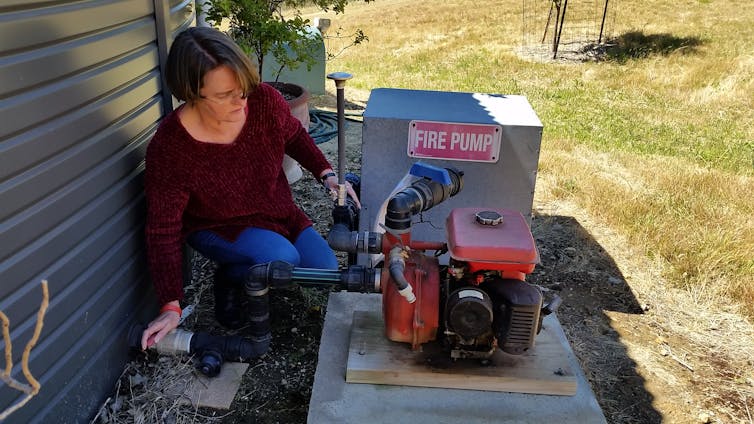 At the fire pump.
Author provided
At the fire pump.
Author provided
The sprinklers fire up a dull, thudding rhythm around the verandah, spraying a mist over the garden and the cat while Mike runs through the finer details of protecting the pump with a cover and sprinkler in the event of a fire.
I watch the garden soaking up the unexpected bounty and notice that some of the plants have gone a bit leggy. Their undergrowth is woody with age. I’ll have to cut that back, prune off the old growth. Some of them may have to go. Much as I love Australian plants and their waterwise habits, I can’t have many in the garden. Most of them are just too flammable.
Everything we do here, every decision we make, is shaped by fire risk: the garden, the house, our holidays, our movements, where we park the cars, our power and our water supply, even our telecommunications.
It is relentless. A friend of mine who went through Ash Wednesday said she was just tired, after 45 years, of the constant worry. She wanted to move somewhere safer. But she couldn’t bring herself to leave the bush.
Perhaps it would be easier not to know the risk, to live in ignorance.
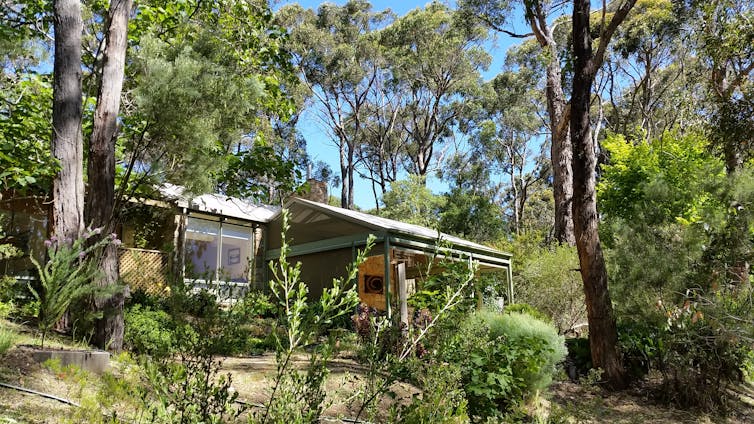 Though the worry is constant, many people can’t bring themselves to leave the bush.
Author provided
Though the worry is constant, many people can’t bring themselves to leave the bush.
Author provided
‘Too busy’
My local fire brigade had an open day a few weeks ago. The volunteers were busy for days, cleaning the shed, preparing the sausage sizzle. Lots of new people have moved into the area, mostly from the city, and chances are they don’t appreciate the risks of living in a bushfire-prone area.
The brigade put up signs, distributed flyers and knocked on doors with invitations. On the open day, I wander over and ask how many people have turned up.
“Oh about half a dozen,” says the captain brightly, before adding, “Well, maybe four actually. And only two of those are new.”
Someone asks about a family who has moved into a property down the road, a younger couple with kids and a stay-at-home dad. Would he be interested in joining the fire brigade?
“Said he was too busy. Maybe later when the kids are older.”
There are more and more people moving into the high risk urban fringes of our major cities, where houses mingle with flammable vegetation. Fewer and fewer people have the time or inclination to join their local volunteer fire brigade.
Many of them commute for work. They think fire-fighting is what happens when you ring 000. They don’t seem to realise that outside of the city, it is every community for itself. We have to fight our own fires.
Read more: Grim fire season looms but many Australians remain unprepared
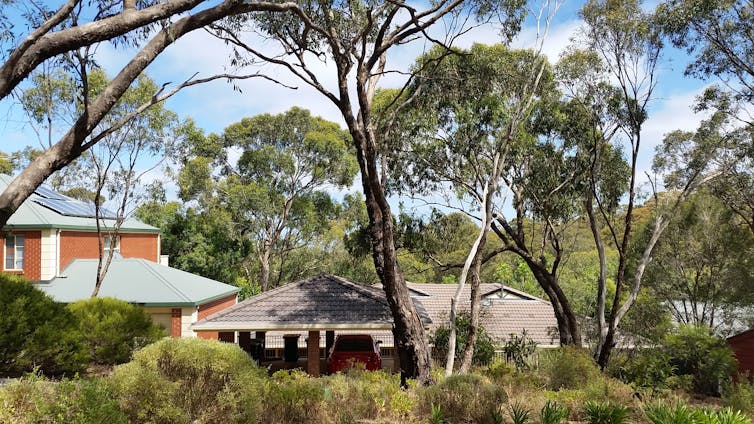 Increasing population in the urban interface.
Author provided.
Increasing population in the urban interface.
Author provided.
I’m watching the news filled with images of the fires in New South Wales. Traumatised householders stand in front of the twisted wreckage of their homes. Tumbled masses of brick and iron are all that remain of a house full of memories.
“We never expected….”
“I’ve never seen….”
“I never imagined….”
No matter how well prepared we are for fires, we always underestimate the scale of the loss – the photos, the family pets, the mementos and heirlooms, or simply the decades of work building a house, a property, a business.
Looking at the television screen, I can’t help but notice the blackened tree trunks next to the ruins of their homes. I worked for a while in community safety for the Country Fire Authority when we lived in Victoria, researching and writing reports, and later a book, on how people respond to bushfires.
I’m well versed in the risk factors – proximity to native vegetation, fuel loads, clearance around houses, house construction and maintenance and most importantly of all, human behaviour.
Leaving is not easy
I used to live in a forest too, with mature eucalypts surrounding my house. We always knew this was a risk. We cleared the undergrowth and removed any “ladders” of vegetation that could allow ground fires to climb the trees. We removed new saplings growing close to the house.
We did as much as we could to make our 1970s home fire safe: installing sprinklers, sealing the roof, covering all the timber fascias in metal cladding.
In an average fire, we probably would have been fine. But when the Kinglake fires approached from the north on Black Saturday, I was no longer sure we would survive. A last-minute wind change swept the fire away from our home.
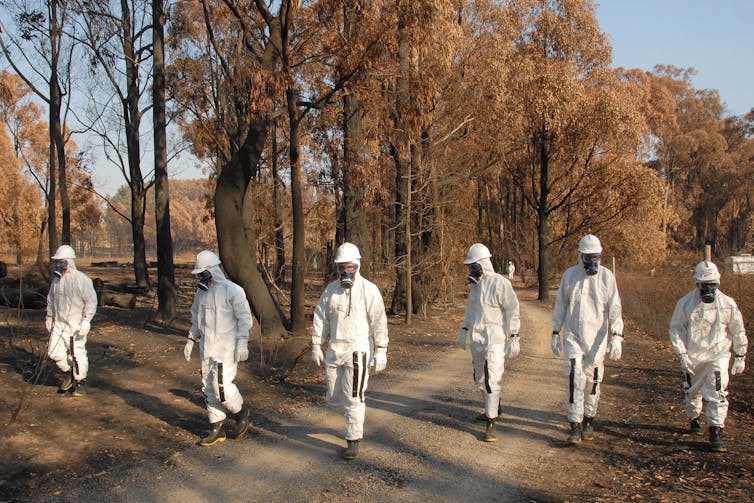 Army personnel join Victoria Police in a search for bushfire victims in Kinglake area in 2009.
Jo Dilorenzo/Department of Defence
Army personnel join Victoria Police in a search for bushfire victims in Kinglake area in 2009.
Jo Dilorenzo/Department of Defence
Like many people, in and around the impact zone, the fires uprooted us and disconnected us. There were so many deaths, so many people and houses gone. And yet so many are still living in the same risky buildings, often rebuilt in the same risky locations. As if we never learn.
We no longer felt so attached to our home. When the opportunity to leave arose, we took it. When we moved to South Australia, we still wanted to live in the bush, despite the fire risk. But it seemed impossible to find a home that had been built for bushfire safety.
A real estate agent showed me an elevated timber home that looked out to the south-west across vast hectares of native forest. A death trap if ever there was one.
“Yes,” agreed the agent. “I’ll just have to find a buyer who doesn’t mind about that.”
Our new house is built of stone, steel and iron, with double-glazed windows and a simple roofline surrounded by sprinklers and hard paving. Every crack and crevice is sealed. And it sits in the middle of a cleared paddock surrounded by a low-flammability garden. We look out over the bushland from a safer distance.
When my children were small, I packed them up and took them into town on every or total fire ban day. It was the prevailing advice from fire authorities. I cannot recall anyone else who did so – it is too hard, too disruptive and too inconvenient. And what do you do with the pets and horses and sheep? Let alone farms and businesses whose assets are practically uninsurable.
Besides, there are so many total fire ban days and they are getting more and more frequent. We’d be leaving for all of summer soon and not everyone has somewhere safer to go.
My former colleagues at the CFA confirmed that few people take this advice to leave on total fire ban days. When the fire risk categories were upgraded to include “catastrophic”, people simply recalibrated their fire risk range to suit.
Now total fire ban days are everyday, ordinary events and people only talk about leaving if the risk is catastrophic or “code red”. And even then, few of them do.
That’s why fire agencies continue to put so much effort into teaching people how to stay and defend their homes – because that is where they are going to end up, no matter what they are told or what they say. After the shocking deaths on Black Saturday, urban politicians thundered in self-righteous fury.
“Why don’t you just tell people to leave?”
Like it is that easy.
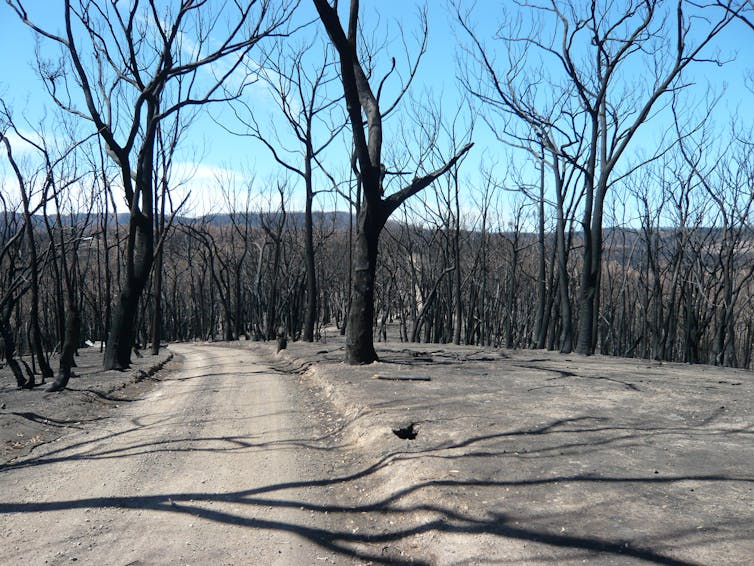 A severe burn near Kinglake.
Author provided
A severe burn near Kinglake.
Author provided
Other people’s fates
I’m reminded of the neighbourhood fire safety programs. These are groups of neighbours in fire risk areas who meet up regularly to undertake training in fire preparation. They run in several states, such as Community Fireguard in Victoria, Community Fire Safe in SA and Community Fire Units in NSW.
Some of the groups in Victoria have continued for years, often meeting annually just before the fire season to run through their plans and discuss issues they might be having. They share advice on how to protect properties, what to do when things go wrong, whose house offers the safest refuge, who is leaving and who is staying. They establish phone trees to warn everyone of imminent dangers and to stay in touch.
I know these programs work. I surveyed many of the fireguard groups who survived Black Saturday and compared them to neighbours who weren’t in groups.
The active members of fireguard groups were more likely to defend their houses. Active members’ houses were also more likely to survive, even when they were not defended. A handful felt their training had not prepared them for the severity of the fires they faced. In truth, I don’t think anyone, not even the most experienced firefighter, expected the severity of those fires. But the vast majority were certain their training helped, and had saved their lives.
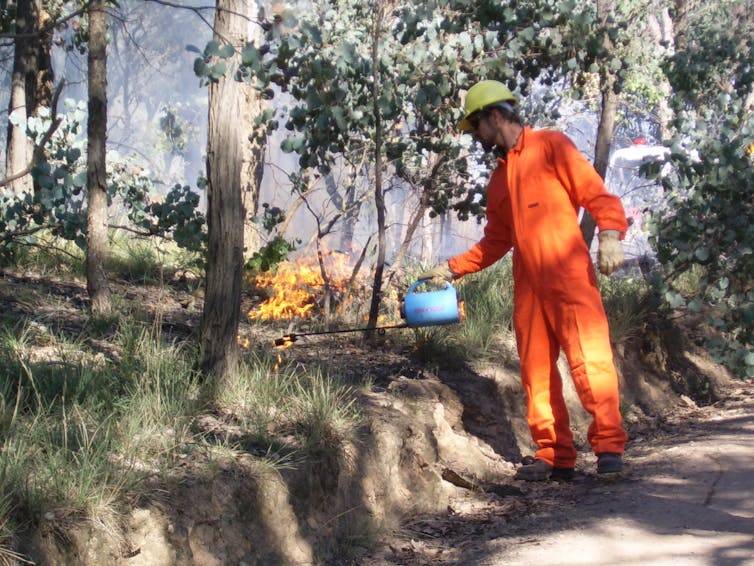 Burning off on private property.
Author provided.
Burning off on private property.
Author provided.
In every group, there are people who do the work and those who don’t. There are always neighbours who are too busy for the training and just ask for the notes, which they never read. They want to be on the phone tree, even though they have not prepared their property and have not thought about what they will do in an emergency. These “inactive” members do not seem to benefit from training. Their houses have the same loss rates as people who aren’t in fireguard groups.
No matter how much other members of the group support them and encourage them, it does not help. I’ve tried to help before, running a fireguard group, but I don’t want to do it again. I don’t want to hold myself responsible for other people’s fates. It is enough to take responsibility for myself and my family.
I remember the fireguard trainers who blamed themselves, who were blamed by others, when neighbourhoods they had worked with suffered deaths and house losses. They often targeted the riskiest locations, areas that were virtually indefensible. Their information was not always accepted.
Trainers, some of whom had lost friends, neighbours and houses in the fires themselves, felt criticised for advice that had not been given, and also for advice that had not been taken. You cannot defend yourself against such angry grief, particularly when you are carrying so much of your own. You just have to listen. A court of law, which looks only for someone to blame, is no place to resolve the complexities of bushfire tragedies.
I had originally thought, when I wrote my book about bushfires, that it would be a simple analysis of the lessons we had learnt. After the Black Saturday fires, I had to write a completely different book. I realised it wasn’t about lessons learnt (even though there are many), it was about our failure to learn from history, our astonishing capacity to repeat the mistakes of the past.
Harder and harder to protect people
“We never expected….”
“I’ve never seen….”
“I never imagined….”
The same things are said after every fire. Blaming a lack of prescribed burning in distant parks when we know that preparation within 100 metres of our own homes is far more important.
Waiting for an “official” warning, as an evil-looking, yellow-black cloud streams overhead and embers land sizzling in the pool beside you.
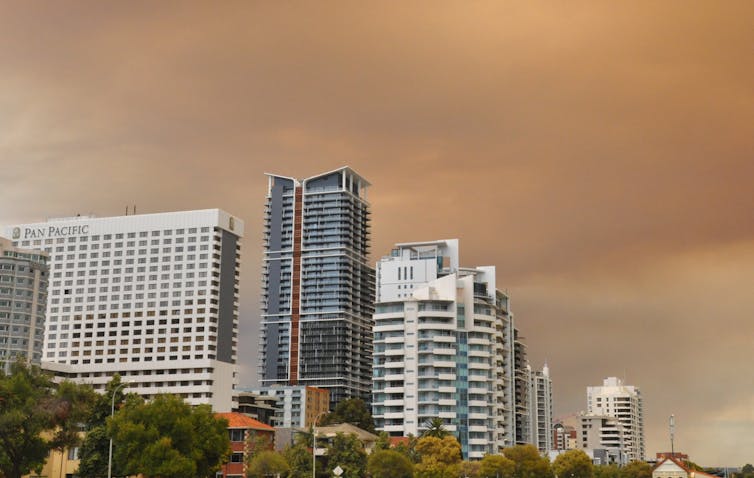 A bushfire north of Perth in 2018 sends smoke over the city.
Sophie Moore/AAP
A bushfire north of Perth in 2018 sends smoke over the city.
Sophie Moore/AAP
Politicians with slick, easy point-scoring ways that divert attention from their own policy obstruction.
The hopeful denial that bad things only happen to other people and won’t happen to us.
We’ve just experienced the hottest year on record, and the second driest year on record. We have lost rainforests that have not burnt for millennia and may not recover. With climate change, fires have become more frequent across all the Australian states, and with more extreme weather events, they are likely to become even less predictable and more dangerous.
There is no avoiding the fact that for the next few decades, we face an increasingly dangerous environment. We have more people living in more dangerous areas, in a worsening climate. Our volunteer firefighters are ageing, and local brigades struggle to entice new members to join. It’s getting harder and harder to protect people.
It would be nice if there was a silver bullet to protect us. If broad-scale prescribed burning in parks actually protected houses and lives, or if we had enough fire trucks and water bombers to save us all.
It would be great if we had a cohesive suite of integrated bushfire policies across states, strong enough to survive from one generation to the next. They could include adequate building standards and access to materials, effective planning and development codes, integrated municipal, state and federal strategies incorporating education, health and safety campaigns. We could create a culture of fire-awareness, rather than panicked responses to disasters followed by a long, inevitable slide into apathy and ennui.
Perhaps one day we will. But in the meantime, our best protection lies in our own hands, safeguarding our own property and making carefully considered plans in advance as to how to save our own lives. It is not an easy path, and one none of us wants to take. But in the end, we are the only ones who can do it.
Authors: Danielle Clode, Senior Research Fellow in Creative Writing, Flinders University
Read more http://theconversation.com/friday-essay-living-with-fire-and-facing-our-fears-128093



















